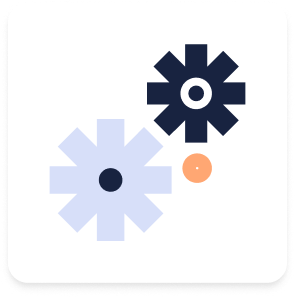Learn about purchasing for teams

Scrum Essentials

Course overview
About Scrum Essentials
With the scrum framework, organizations can achieve better customer satisfaction while equipping teams to innovate and thrive. The modules in this course are:
- An Introduction to Agile and Scrum
- The Scrum Framework
- The Scrum Team — Foundation for Success
- Scrum Events in Action
- Scrum for Product Development
- Scrum in a Non-Scrum Environment
- Scenario Simulation: Navigating the Scrum Events
After completing this course, you'll be equipped to improve your practice of scrum in any role. The objectives of Scrum Essentials include:
- Defining "agility"
- How agility differs from traditional project management
- Who are the scrum team members?
- The scrum events and their purpose
- Qualities and strategies of successful scrum teams
- When to use scrum
- Tips for overcoming common challenges when you adopt scrum

Time: 4 hours
Format: On-demand and live options
Credential: Microcredential
Prerequisites: None
What you'll get with the on-demand course: 4 hours of on-demand learning or live, instructor-led training and a Scrum Alliance Scrum Essentials badge to showcase your new skills.
The on-demand course features written content as well as flash cards and other interactive modules to reinforce your learning.

Who Should Take Scrum Essentials?
Scrum Essentials is right for anyone who wants to add in-demand knowledge to their skill set. It combines theory with real-world examples so you can take concrete actions when you return to work.
- People new to the scrum framework
- Teams or individuals from any industry involving complex work
- Scrum and agile team members
- Anyone who wants to learn more about scrum and agile ways of working
- Project managers and product managers
- IT professionals, software engineers, technical teams
- Professionals from a variety of fields, including HR, manufacturing, government, healthcare, and education
Already have a CSM, CSD, or CSPO? If it's been a while since you completed a Scrum Alliance certification course, Scrum Essentials provides an opportunity to revisit the basics; however, it won't introduce any new scrum knowledge.

Course modules
In this module, you will be introduced to the agile and scrum fundamentals, setting a strong foundation for success.
Upon completion of this module, you will be able to:
Define scrum
Discuss why each of the five scrum values is essential to scrum.
Identify benefits and potential challenges and solutions for implementing scrum.
Identify why the Manifesto for Agile Software Development was developed.
List the agile values.
In this module, you will learn how scrum provides a proven framework for teams to collaborate effectively, respond to change, and deliver valuable products that meet evolving customer needs.
Upon completion of this module you will be able to:
Describe the purpose of each scrum event.
Define scrum artifacts: product backlog, sprint backlog, and increment.
Describe the three commitments to the scrum artifacts: Definition of Done, sprint goal, and product goal.
In this module, you will explore how scrum teams are composed and what makes them successful.
Upon completion of this module, you will be able to:
Describe the composition and purpose of the scrum team
Define the characteristics of a high-performing scrum team
Define the three scrum accountabilities.
Identify the key skills and attributes required for each scrum team member
In this module, you will learn about scrum events, which are the key elements and ceremonies of the scrum framework:
Upon completion of this module, you will be able to:
Describe the purpose of each scrum event: the sprint, sprint planning, daily scrum, sprint review, and sprint retrospective.
Discuss how scrum works in a team environment.
In this module, you will explore product backlog management and sprint backlog management for product development.
Upon completion of this module, you will be able to:
Identify techniques for managing the product backlog and sprint backlog.
Define why to size product backlog items and manage the sprint backlog.
Identify an estimation technique for product backlog items and why they are useful.
In this module, you will explore how scrum teams are composed and what makes them successful.
Upon completion of this module, you will be able to:
List the benefits and challenges of agile approaches as compared with traditional project management methods.
Discuss how scrum works in a team environment.
Unmatched quality and scale
“My current role is in elementary education and this information would have been invaluable to learn during my college years. I'm looking forward to utilizing my new knowledge.”
“I particularly enjoyed the scenarios and being able to listen in and test my knowledge. It made it fun and engaging!”

Developed by community experts
Our community is at the heart of everything we do. This course wouldn't be possible without the subject matter experts who generously share their time and talent. Join us in recognizing these individuals for helping us inspire and empower our global agile community.

Is a microcredential worth it?
Microcredentials are a great way to continually add new skills with fast and flexible formats. Here are just a few reasons microcredential training is a worthwhile investment for you and your team.
- Focused expertise — gain specialized knowledge in a specific area
- Flexible learning — learn the way you prefer by choosing from live or on-demand learning formats
- Cost-effective — typically less expensive than certifications or degree programs
- Relevant — topics prioritized to cover industry trends and emerging technologies
- Expedient — earn a credential in hours as opposed to weeks, months, or years
- Recognizable — validated by Scrum Alliance, a globally recognized credentialing body
- Practical — build skills and knowledge immediately applicable in your role
- Stackable — combine microcredentials to build comprehensive learning pathways
Train your team!
Interested in purchasing this course for more than one person? We can help.

Scrum is one of the most popular agile frameworks for getting work done. It is often used by organizations and teams that develop products, but it is also used for other types of complex work, such as Human Resources, healthcare, manufacturing, education, and government.
The framework is composed of team member accountabilities (similar to roles), events (similar to meetings), artifacts, and activities. Scrum teams use these aspects of the framework to continuously improve how they work together and to rapidly adapt how they work based on feedback.
Ultimately, scrum has the potential to delight your customers, foster innovation, accelerate time to market, cultivate resilient organizations and happy teams, and provide an array of other benefits. Although seemingly straightforward and simple, scrum can be difficult to master. Knowledge and training can give you a head start.
Take Scrum Essentials for an overview of the framework. Understand scrum's teams, events, and artifacts, as well as the benefits of agile ways of working. Master the basics so you can get started with scrum in any role, and in any industry.
For an in-depth exploration of scrum and how a scrum master serves the team, product owner, and organization, consider the Certified ScrumMaster course. The CSM takes a deeper look at the scrum master accountability on the team. It's a great option if you want to know more about scrum, and if you're interested in or already working as a scrum master.
Similarly, you can expect to learn about the foundations of scrum in the Certified Scrum Product Owner and Certified Scrum Developer courses while also discovering the responsibilities and role of product owners and scrum developers.
You'll receive a digital badge to showcase your knowledge once you complete Scrum Essentials. This microcredential badge never expires.
Scrum Essentials is a great introductory option for people who want to master the basics of scrum. On the other hand, CSM presents a deeper dive and opens up more opportunities for growing your scrum skills and agile capabilities. Neither is a prerequisite for the other.
If you've already taken any of the courses within the CSM, CSPO, or CSD track, you may find value in revisiting the basics with the Scrum Essentials course; however, they will be the same basics you learned about in your certification courses.
Have additional questions?

Register for Scrum Essentials
Deliver better products or services with the scrum framework.





